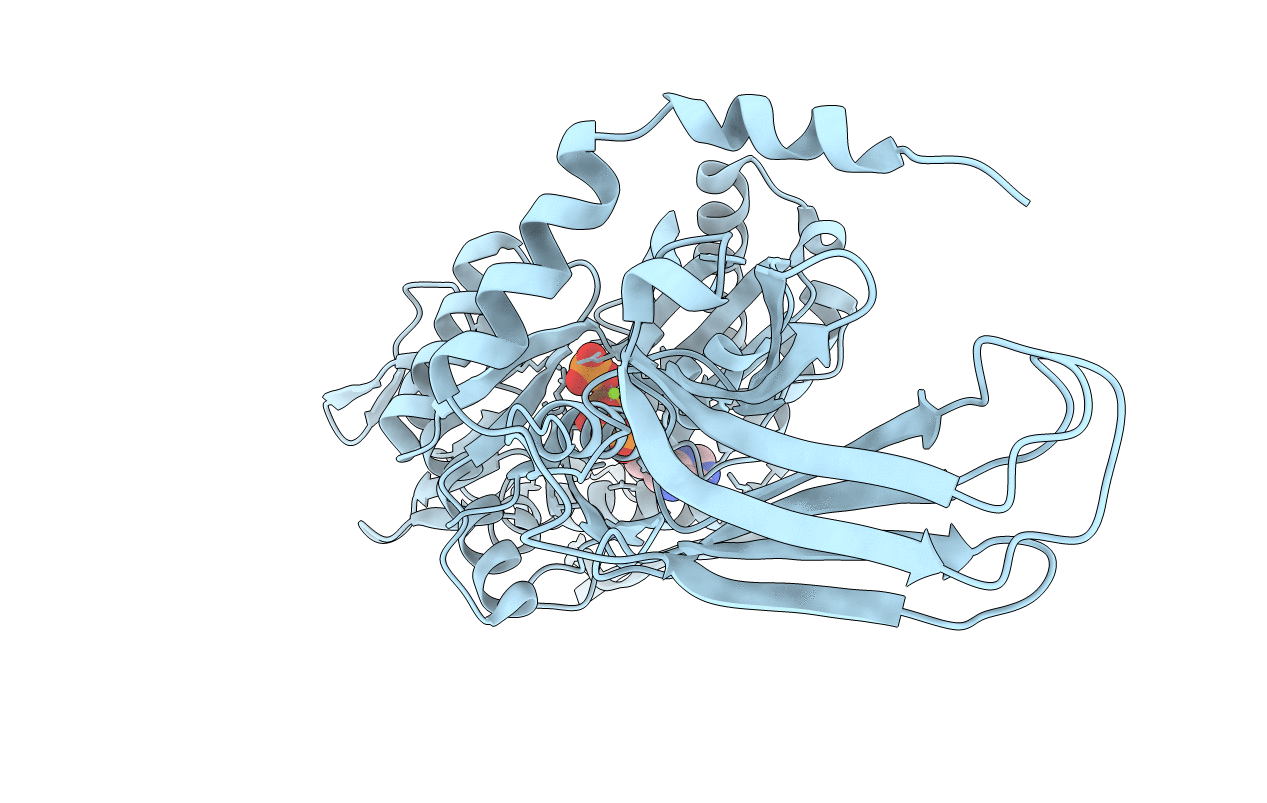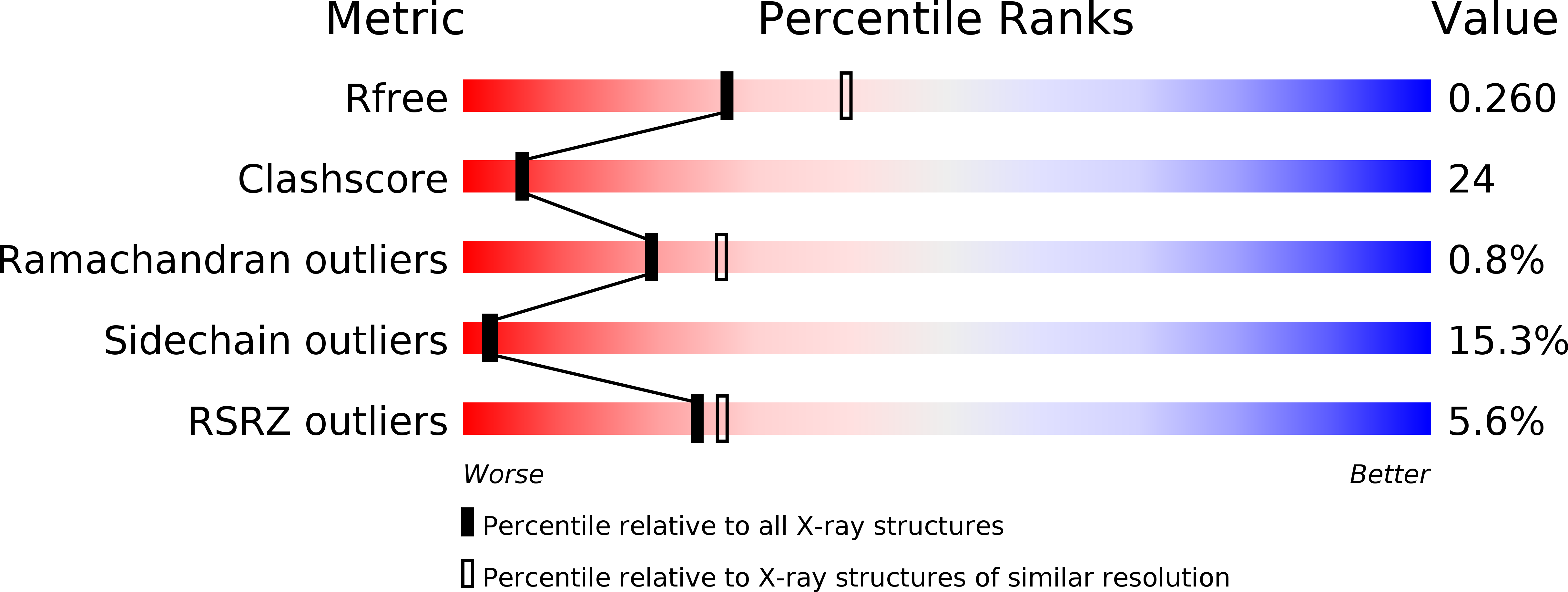
Deposition Date
2007-08-02
Release Date
2008-04-08
Last Version Date
2023-12-13
Entry Detail
PDB ID:
2V7Y
Keywords:
Title:
Crystal structure of the molecular chaperone DnaK from Geobacillus kaustophilus HTA426 in post-ATP hydrolysis state
Biological Source:
Source Organism:
GEOBACILLUS KAUSTOPHILUS HTA426 (Taxon ID: 235909)
Host Organism:
Method Details:
Experimental Method:
Resolution:
2.37 Å
R-Value Free:
0.27
R-Value Work:
0.22
R-Value Observed:
0.22
Space Group:
P 21 21 21


